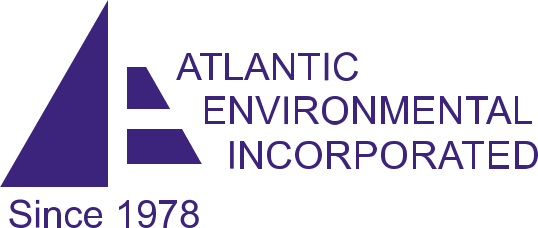Written By: Robert E. Sheriff, MS, CIH, CSP
February 17, 2020
Silica-OSHA Final Rule for Crystalline Silica in Effect June 23, 2018
If you need assistance in interpretation or compliance with the new Silica Regulations discussed in this article, call us at 973-366-4660 or e-mail us at info@atlenv.com for details and a free estimate.
New OSHA Regulation on Silica
The new OSHA Regulation on Silica has been in effect for over 1 ½ years. By now most industries and construction groups have had a chance to understand the OSHA requirements and implement these provisions that are in effect.
OSHA regulations have been in effect as of October 23, 2017, for the Construction Industry. This notice was issued on October 19, 2017. The effective date for General Industry and Maritime is June 23, 2018.
Separate regulations were issued for Silica in Construction (29CFR1926.1153) and General Industry/Maritime (29CFR1910.1053).
The general provisions to both silica regulations are generally the same:
- Permissible Exposure Limit (PEL) over an 8-hour shift is 50 mg/M3 of air of crystalline silica.
- Action Level of 25 ug/M3 of crystalline silica.
- Requires employers to monitor all work activities where silica exposure may occur.
- Requires employers to use engineering controls to limit worker exposure where sampling indicates a level above the PEL.
- Respirators as a supplement to engineering controls where such efforts won’t adequately control exposure.
- Develop a written silica control plan.
- Medical exams.
- Training
- Final Rule for silica took effect for General Industry and Maritime on June 23, 2018.
NOTE: Hydraulic Fracking, although part of Construction, has an effective date of June 23, 2018, but engineering controls have a compliance date of June 23, 2021 (5 years!) (But 1 ½ years from now!!)
Those of us in the occupational health profession have expected these new regulations for some time. There are many activities in Construction and Industry where exposures have not been well controlled. Also, the previous regulation had a formula for calculating the exposure level (the greater the % silica the lower the PEL) which was confusing and difficult to explain.
Sources of Overexposure in Construction
From experience, the most likely sources of silica overexposure in Construction are:
- Sheetrock application especially sanding wallboard compound.
- Dry concrete cutting.
- Sand and gravel operations.
- Concrete mixing—including Redimix.
- Mining including rock, salt, coal, other minerals.
- Construction excavation especially where rock is involved.
- Dry aspects of fracking—all stages.
- Terrazzo flooring sanding.
Sources of Overexposure in General Industry
Overexposure potential of silica in General Industry are:
- Sand and concrete/mortar packaging.
- Stone cutting including marble.
- Marble cutting.
- Brick and block manufacturing.
- Gravestone cutting and lettering.
- Countertop manufacturing.
- Refractory products (bricks and cement).
- Glass manufacturing.
- Foundries
There are many other commercial activities that handle sand as part of their processes—both in Construction and General Industry. The best approach is to carefully review the Safety Data Sheets (SDS) for all raw materials to determine if silica is present in reportable quantities. If so, it is prudent to have the work activities that use those silica-containing raw materials monitored. The proper method of sampling is the use of a portable air sampler worn by the worker for a full work shift. Samples will be analyzed for respirable dust and crystalline silica and compared to the 50 ug/M3 PEL. Unless determined otherwise we have analysis of samples analyzed for all 3 forms of crystalline silica: a-quartz, tridymite, cristobalite.
The final rule can be found on OSHA’s website at www.osha.gov/dsg/topics/silicacrystalline/
Solutions to Overexposure of Silica
Solutions to overexposure to silica are widely varied. The most common approach is to convert a dry process to wet methods; but beware, some wet processes have been shown to still exceed the PEL. PLEASE NOTE THAT THE OSHA REGULATIONS HAVE SPECIFIC CONTROL MEASURES REQUIRED BASED ON THE WORK ACTIVITIES.
Wet methods by themselves are not always totally effective simply because a very fine mist can also carry the silica particles in such a size range that they can be inhaled.
The first step is to monitor the worker’s exposure through personnel sampling. Since the Silica Regulations have been in effect since 2018, this should already have been done – or done very soon.
Atlantic Environmental has the capability of monitoring worker exposure, developing control plans and performing the necessary training, as well as recommending solutions to identified problems. We have Certified Industrial Hygienists (CIH) with substantial experience in crystalline silica generating activities.
For more information contact Atlantic Environmental.
Our primary service areas are New Jersey NJ, New York NY, (New York City), Pennsylvania PA, Connecticut CT, Delaware DE, Massachusetts, (Boston) MA, Rhode Island RI, Washington DC, Wisconsin WI, Maryland MD, Michigan MI, Illinois (Chicago) IL, Virginia VA, Indiana IN, Georgia (Atlanta) GA, Alabama AL, North Carolina NC, South Carolina SC, Tennessee TN, Texas (Dallas, Ft Worth) TX, Oklahoma OK, DC, Arkansas AR, Florida FL. We can service most other areas of the U.S. but with some added travel charges.



